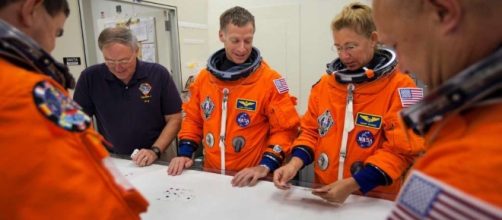The estimable Eric Berger at Ars Technica notes that NASA has just entered the longest period during which it has not launched a person into space. The previous spaceflight gap was between the Apollo-Soyuz Test Project mission of 1975 and the first flight of the space shuttle Columbia in 1981. The current gap started with the final flight of the space shuttle and will not end until one of the commercial crew vehicles flies hopefully in late 2018, though some think that event will be delayed until 2019.
Berger spreads the blame far and wide, naming President George W, Bush, President Barack Obama, and Congress as the culprits.
He is accurate insofar as that goes, but incomplete.
When Bush the Younger first announced what would become the Constellation program in 2004, he envisioned a space flight gap of only two years, between a planned last shuttle mission in 2010 and the first flight of the Orion, then envisioned as being launched on an Ares 1. The Commercial Orbital Transportation System program was started to develop private sector spacecraft that could take over Earth to low Earth orbit transportation if they came to fruition. However, penny-pinching by the Office of Management and Budget and Congress and unexpected technical challenges combined to expand that gap.
Then President Obama was elected. When the Second Augustine Commission gave him the excuse to cancel Constellation, he proceeded to do so, in secrete, with the deed only revealed in the budget proposal offered in February 2010.
Not only was Constellation canceled, but Obama proposed to double down on the Bush commercial initiative and entirely rely on the business sector for Earth to LEO transportation.
Congress revolted in rare fury. Obama had expected it just to comply and did not bother to consult with the legislative branch. Congress soon forced Obama to accept an underfunded Journey to Mars program. In a fit of pique, the legislative branch underfunded the newly revamped commercial crew program for its first few years. Congress is funding commercial crew fully now, but technical challenges have cropped up. The space flight gap expanded from two years to as long as eight.
Berger, along with many, hopes that this will be the last time America will ever lose the capacity to launch people into space.
The commercial crew spacecraft, as well as what is coming from Jeff Bezos’ Blue Origin, as well as NASA’s Orion, will combine to ensure that Americans will fly into space on their country’s spacecraft and will never be dependent on another country again. But the second space flight gap proves a cautionary tale for what happens when a bad public policy is not thought through and is made anyway.

